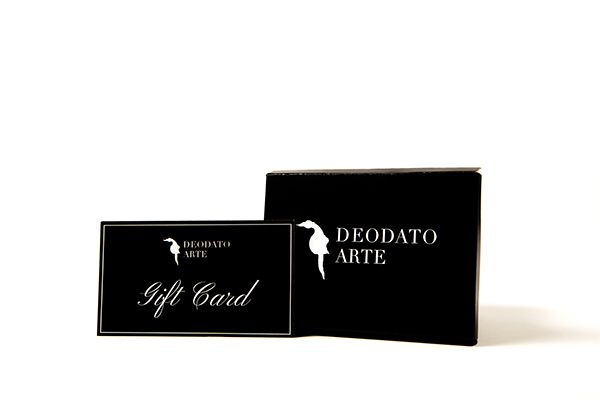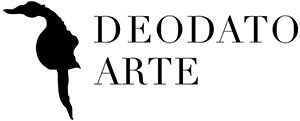
On September 30, 2023, the enchantment of contemporary art met the historical elegance of Lugano at Villa Ciani, the stage for Liu Bolin's latest artwork, Magazine Rack.
Magazine Rack: The Villa Ciani Artwork
A master of optical illusion, Bolin once again enriched the discourse on the intersection of essence and perception, highlighting the subtle line that separates the real from the perceived in the contemporary era.
Liu Bolin, a visionary artist and body painter, turned his own body into a living canvas, becoming one with an installation made of contemporary magazines.
In Magazine Rack, Bolin merges with a wall of magazines, disappearing among colorful covers and captivating titles, demonstrating how individuals can be submerged by the abundance of information and images in mass culture. Magazine Rack is a composition that invites the observer into a dance of printed images and words, an intricate network of fashion, news, art, and culture that envelops and almost erases the human figure at its center.
In the sacred silence of Villa Ciani, amid the resonance of past eras and the fervor of today's cultural debate, Bolin transformed into a presence of absence. His artwork is a palimpsest where body painting overlays the myriad faces of publications, in a camouflage game that challenges our gaze to go beyond the surface.
Bolin's creation process is meticulous and reflective: every strip of fabric, every contour of his body is painted with craftsmanship, in a ritual that is as much meditation as it is performance. The result is a symbiosis of textures and tones reflecting the visual cacophony of printed media, highlighting our potential to get lost in a sea of overexposure.
Magazine Rack is a poignant commentary on identity in the information age, an era where we are defined as much by the narratives we consume as by those we contribute to creating. Bolin places himself at the center of this reflection, his body a kind of rhetorical question: how do we define ourselves when every aspect of our being can be reflected, replicated, or reformulated on a piece of paper?
"Before choosing a location, I consider the social themes that place embodies. Essentially, I contemplate the messages I could convey through it to have an impact on society. Identifying the right space is crucial to communicate my message. In this initial phase, if obstacles arise, I try to overcome them because the place takes precedence over everything," says Liu Bolin, who continues, "Some may say that I disappear into the landscape; I would say it's the landscape that takes possession of me."
Villa Ciani, with its history and commitment to promoting art, provided a unique context for this artistic exploration. Magazine Rack becomes a dialogue between past and present, between the immortality of art and the ephemeral nature of media, between the permanence of stone and the fleetingness of printed paper.
The audience fortunate enough to immerse themselves in this experience faced an artwork that challenges perception, requiring a careful and engaged gaze. Reactions varied: some marveled at Bolin's impressive technique, while others meditated on the intrinsic themes of the artwork.
Magazine Rack remains in collective memory as an artistically significant event, contributing to strengthening intercultural and intergenerational dialogue. Liu Bolin's enigmatic and revealing art continues to stimulate our awareness, inviting us to question who we are in a constantly changing world and how we can emerge, distinct and authentic, from the incessant collage of images defining our time.
Liu Bolin: Themes of the Invisible Artist
Liu Bolin's artistic philosophy lies at the intersection of the human being and the environment that surrounds him, exploring the dynamics of visibility and invisibility in modern society. Through his art, Bolin questions the relationship between individuality and the environment, emphasizing how personal identity can often be overwhelmed by the context in which one finds oneself. He reflects on how, at times, individuals may feel "invisible" within broader social, economic, and political structures.
This reflection manifests emblematically in the unique body painting technique Bolin employs to "disappear" in his works. His is a meticulous and laborious practice: Bolin stands still for hours as his assistants paint his body to reproduce the patterns, colors, and textures of the background behind him, ranging from urban scenes to magazine shelves.
This camouflage technique is not just a visual tour de force but also a powerful political and social message. The act of visually erasing oneself becomes a metaphor for the annulment of the individual, a commentary on the loss of personal identity in the era of globalization and commercialization. Through his art, Bolin invites the viewer to reflect on their position in the world and the relationship between humanity and the surrounding environment, emphasizing the importance of maintaining a critical awareness of the forces shaping our perception of reality.
Through his art, Bolin invites the viewer to reflect on their position in the world and the relationship between humanity and the surrounding environment, emphasizing the importance of maintaining a critical awareness of the forces shaping our perception of reality.











 Register
Register Wishlist
Wishlist Contact Us
Contact Us





